Hoop Hoop Hooray! Look at how far we’ve come building the Hoop House!

Faithful volunteers and hoop house builder extraordinaire Steve Hill gathered for the second Saturday to put up the ribs and ends of the Hoop House. Lots of carrying of gravel, leveling, tamping and before the clouds rolled in at the end of the day and the rains began, much had been accomplished. We are thrilled!
Thanks again to all the volunteers, including those who furnished another fabulous feast for lunch.
Next Build Day is Saturday, October 8…
We’ll start at 8 a.m. Saturday, October 8. The plan is to finish the ends and put up the plastic. If you want to volunteer for a few hours, email us. (info@commonwealthurbanfarms.
Volunteering is a great way to learn about building a hoop house and it’s a wonderful experience to work together in community. Lunch provided.
And then it will be time to celebrate at our HOOPAPALOOZA!
The Hoop House Grand Opening
MARK YOUR CALENDAR: October 22. Noon to 3 p.m. Music, food, fun, tours, silent auction, the whole she-bang! More details to come.
Veggie Spotlight: Sweet Baby Turnips!

Maybe it’s that great CommonWealth compost. Maybe it’s Lia’s magic. Maybe it’s the perfect variety for this spot. Whatever the reason, we are grateful for the return of baby turnip season! Now come the tender white globes of that distinctive sweet turnip flavor, and the fresh greens to add to fall’s table.
This recipe for a delectable turnip soup is passed along by a friend whose mother made it perfectly. The adventure of this recipe is that there are no exact amounts; the cook gets to perfect it, considering the delicate flavor of the turnips available.
Grace’s Exquisite Turnip Soup
Bunch of tender turnips (greens removed)
1 Tablespoon butter
Milk or Half and Half (not too much, just enough to make the mashed turnips the consistency of soup)
Salt
Pepper (Black and/or White)
Quarter turnips or, if small, leave whole. Just barely cover with water. Cook until tender (it doesn’t take long.) Drain. Mash or blend in blender. Set aside.
Heat milk or half and half until just boiling.
Add mashed turnips, butter, salt and coarse-ground pepper
Serve immediately.
The trick is the balance of turnip and milk. You need the milk but not so much that it takes away the exquisite turnip flavor. Salt and butter help create the wonderful flavor.
A Field of Sunflowers
Mid-summer we planted a variety of sunflowers in an empty lot where the soil needs remediation from lead. Now the sunflowers are at their peak! What a sight to behold!
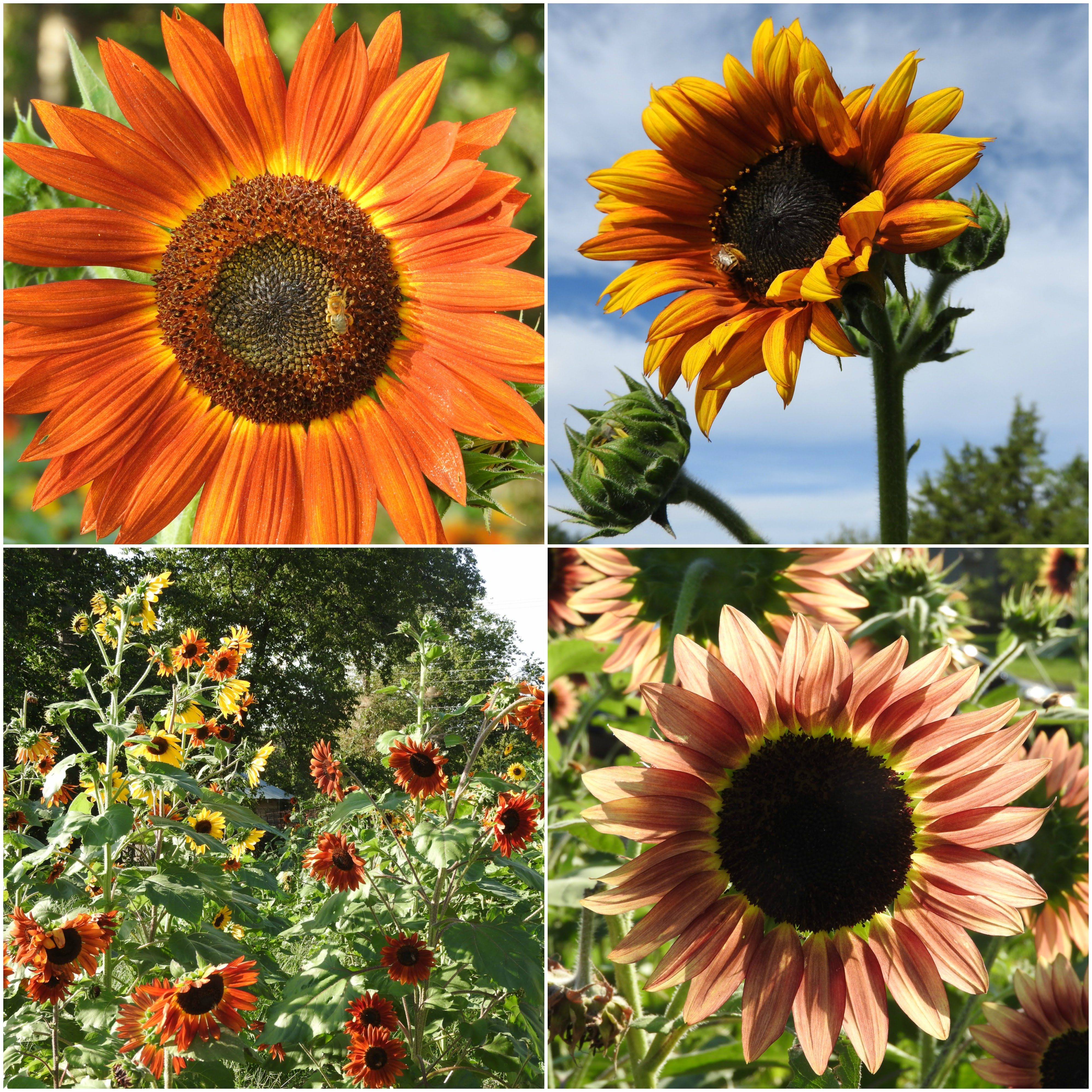

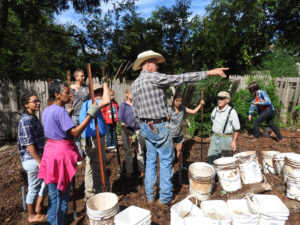
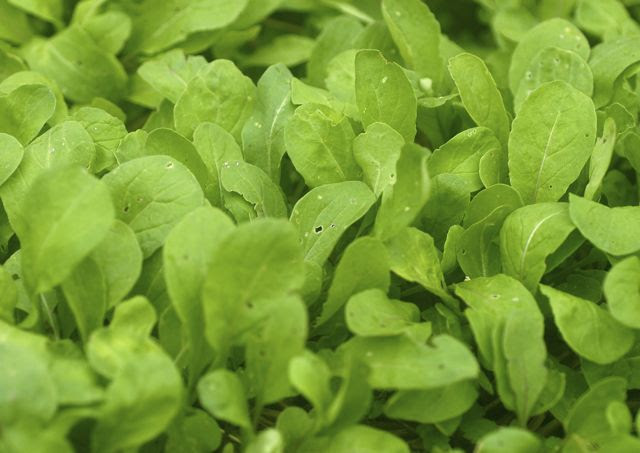

 Okra. Most people either adore it or abhor it. You have to hand it to a vegetable that manages to be slimy, crunchy, prickly, edible and TASTY all at the same time.
Okra. Most people either adore it or abhor it. You have to hand it to a vegetable that manages to be slimy, crunchy, prickly, edible and TASTY all at the same time.

 These beans are in the cowpea family rather than the green bean family, which explains why they grow so well in the dead of summer. The large blossoms are highly attractive to bumblebees and many other beneficial pollinators.
These beans are in the cowpea family rather than the green bean family, which explains why they grow so well in the dead of summer. The large blossoms are highly attractive to bumblebees and many other beneficial pollinators. hat the long strands will be limp and slightly wrinkled even when they’re fresh. Try pairing them with eggs, in stir fries with some Thai roasted chile paste, or stewed with tomatoes. Lia’s favorite way to cook yardlong beans is a simple stir-fry; some oil, lots of garlic and/or ginger, then yard long beans and fairly high heat until they are well-cooked and slightly blackened. JoBeth offers a recipe below.
hat the long strands will be limp and slightly wrinkled even when they’re fresh. Try pairing them with eggs, in stir fries with some Thai roasted chile paste, or stewed with tomatoes. Lia’s favorite way to cook yardlong beans is a simple stir-fry; some oil, lots of garlic and/or ginger, then yard long beans and fairly high heat until they are well-cooked and slightly blackened. JoBeth offers a recipe below.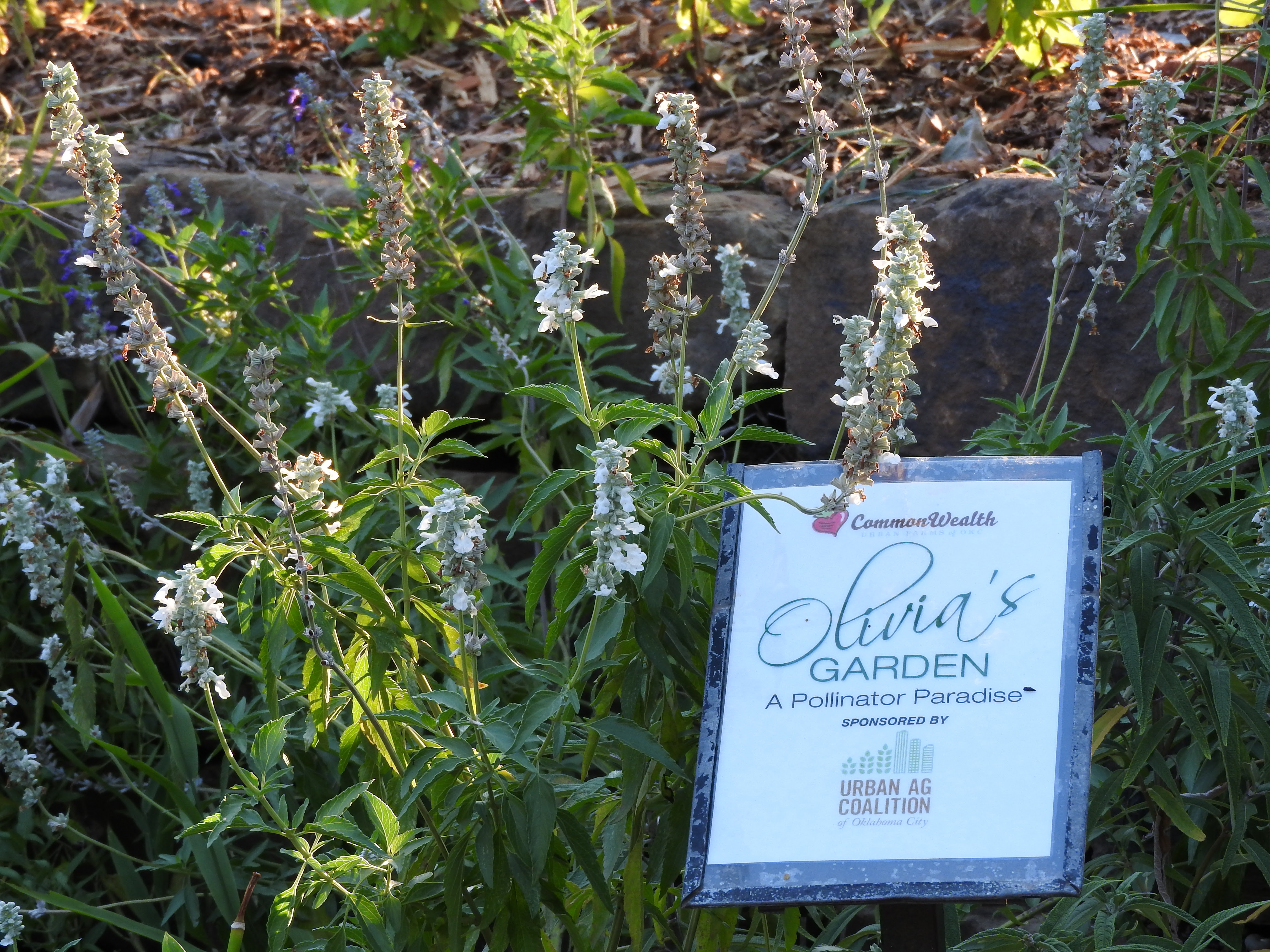
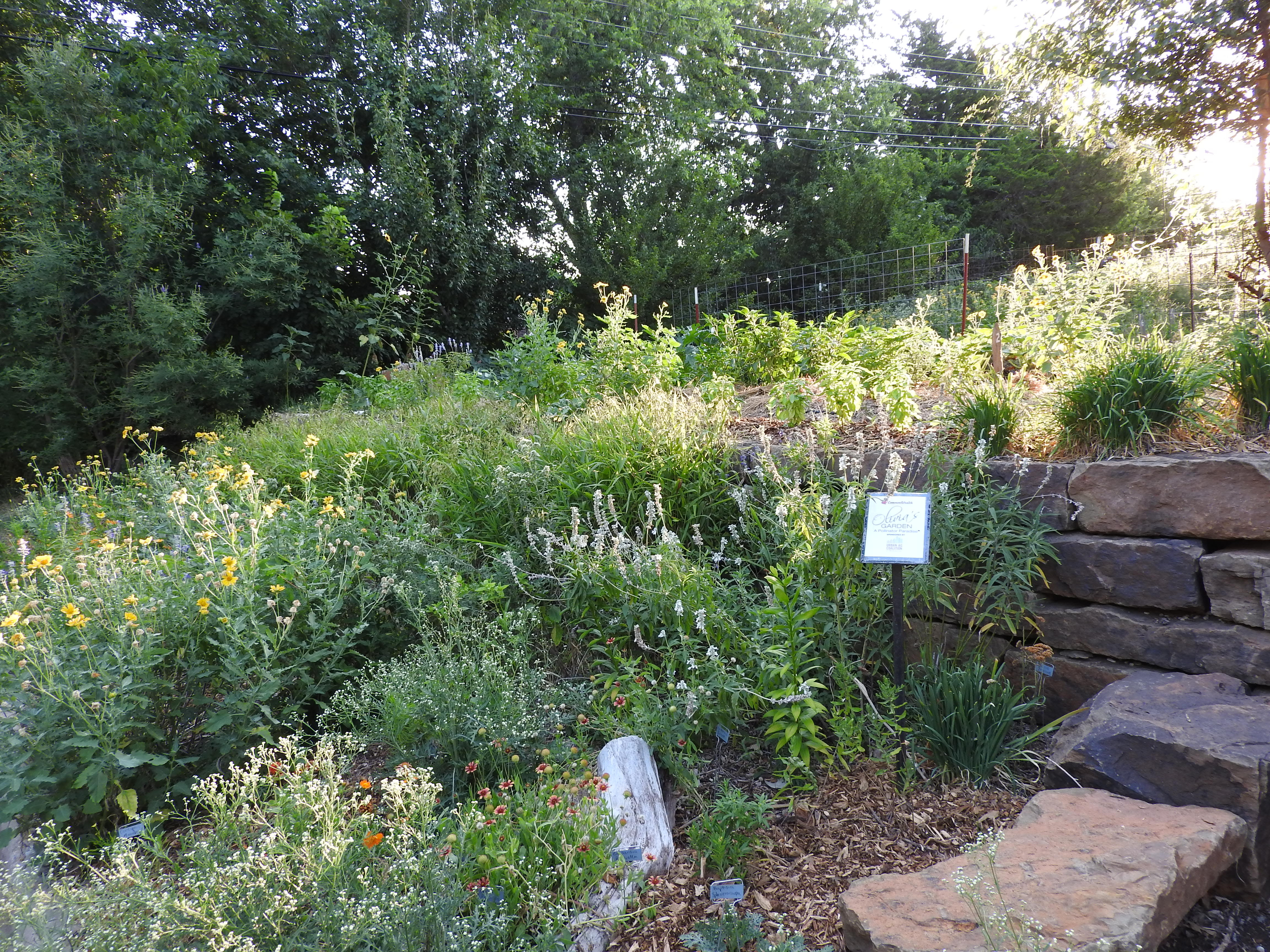 inator garden and create a habitat for pollinators. No room for a garden? Let us share ours with you! We welcome volunteers’ help. It’s a lovely place to be on Saturdays! Visit us from
inator garden and create a habitat for pollinators. No room for a garden? Let us share ours with you! We welcome volunteers’ help. It’s a lovely place to be on Saturdays! Visit us from 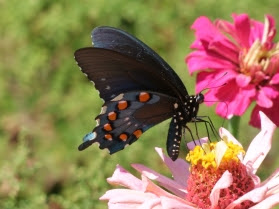 formal to the xeric perennial border to the rustic urban homestead, there will be something for everyone to enjoy.
formal to the xeric perennial border to the rustic urban homestead, there will be something for everyone to enjoy.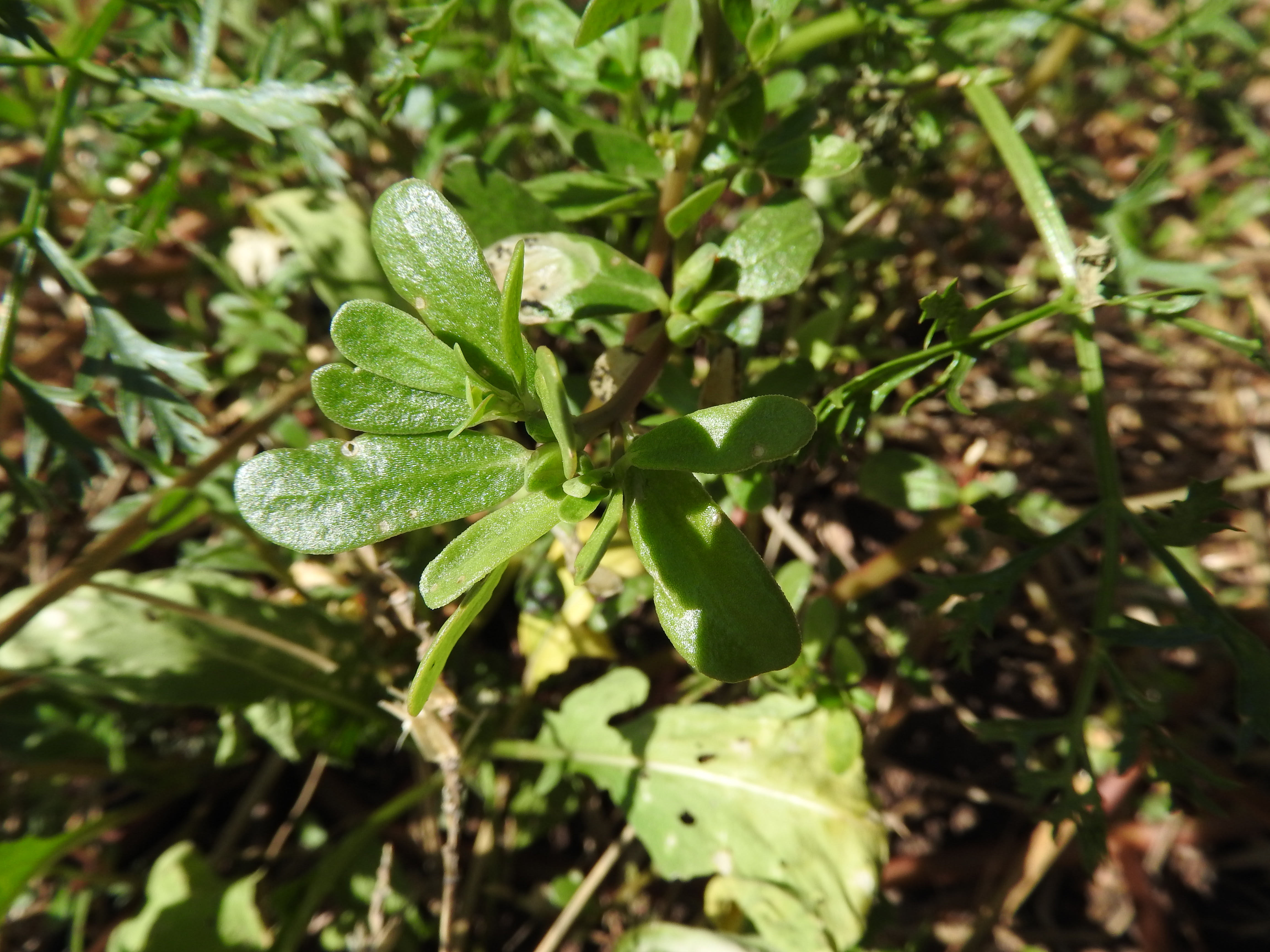 mild-tasting green that grows happy as a clam, right when our weather gets super hot and dry. Impressive!”
mild-tasting green that grows happy as a clam, right when our weather gets super hot and dry. Impressive!”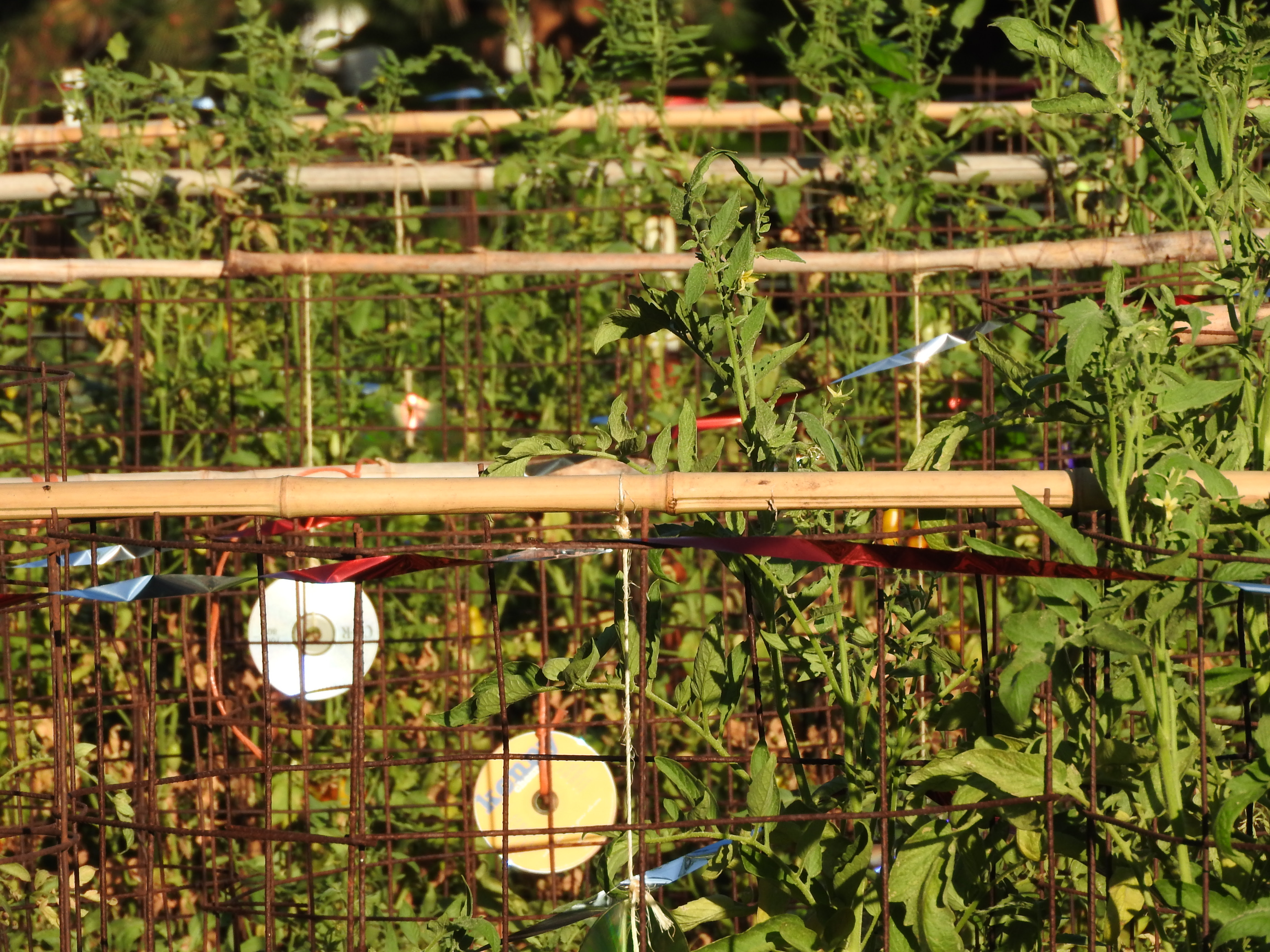
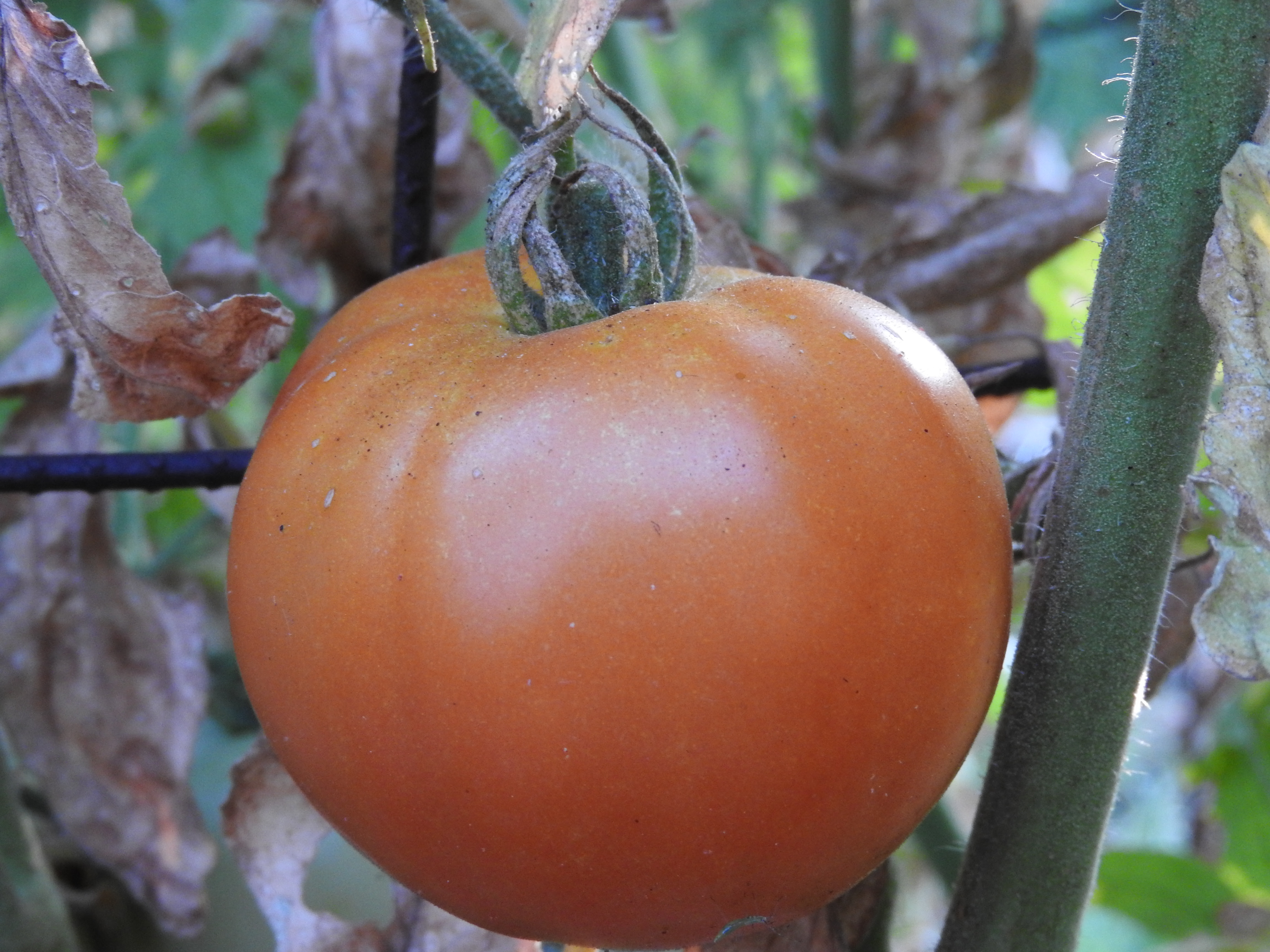 Garden School in August
Garden School in August summer. We grow Benary’s Giant, a particularly fine variety with tall, sturdy stems and vivid, almost neon blooms. Our Giant Series Marigolds are, indeed, big & tall & blazing orange; if you want BRIGHT, we’ve got you covered.
summer. We grow Benary’s Giant, a particularly fine variety with tall, sturdy stems and vivid, almost neon blooms. Our Giant Series Marigolds are, indeed, big & tall & blazing orange; if you want BRIGHT, we’ve got you covered. n this year, we went to work preparing the ground—some wood chip-enriched, some red clay—for a planting of sunflowers. One overcast morning recently, a team hoed and raked and yanked up Bermuda grass, then worked up rows. Lia brought several varieties of sunflowers—including Firecracker, Soraya, Santa Lucia—with different maturation times so that there will be sunflowers popping up into autumn. Miracle of miracles, it rained the morning after the seeding! And then it rained again. In July!
n this year, we went to work preparing the ground—some wood chip-enriched, some red clay—for a planting of sunflowers. One overcast morning recently, a team hoed and raked and yanked up Bermuda grass, then worked up rows. Lia brought several varieties of sunflowers—including Firecracker, Soraya, Santa Lucia—with different maturation times so that there will be sunflowers popping up into autumn. Miracle of miracles, it rained the morning after the seeding! And then it rained again. In July!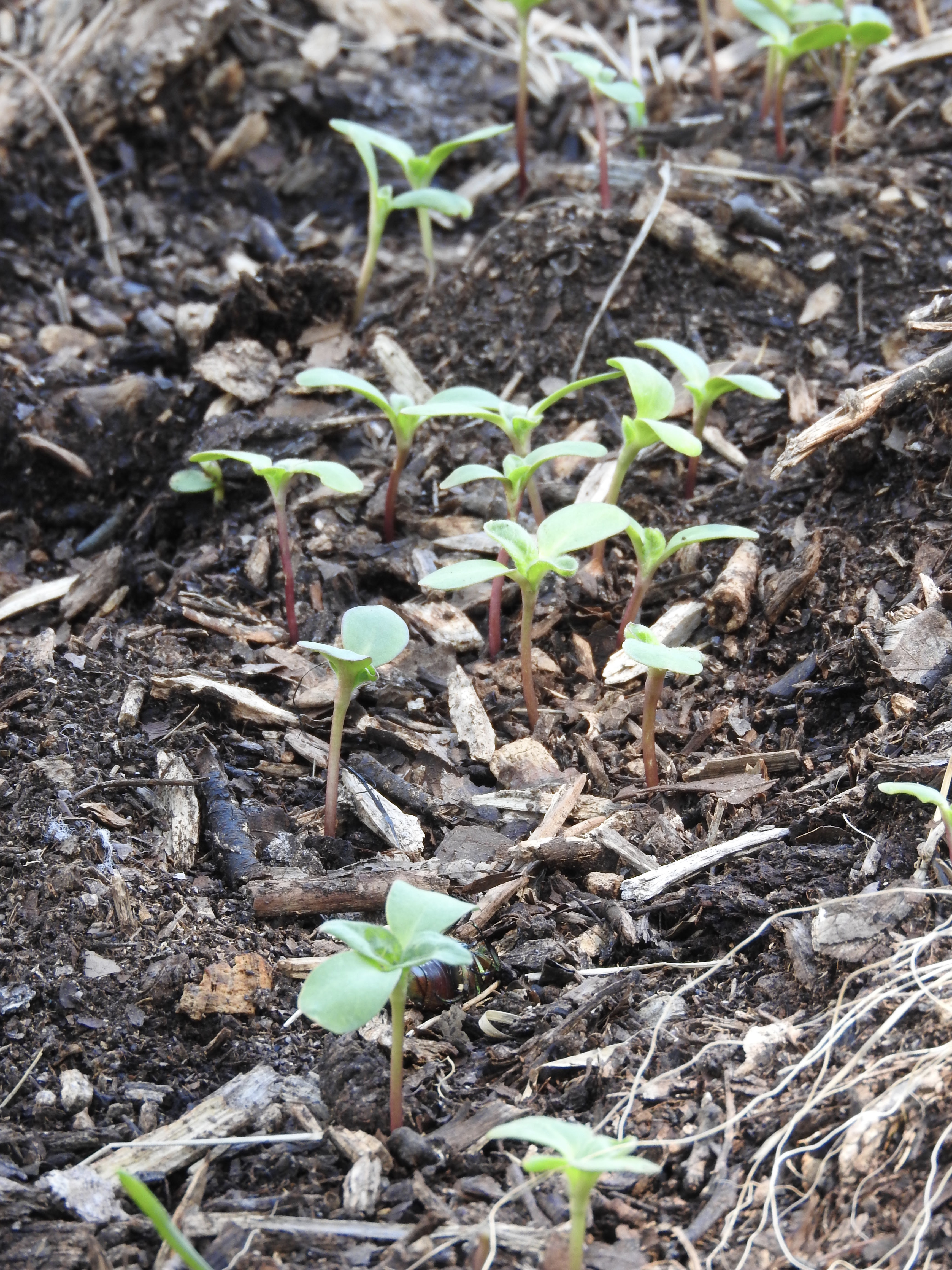
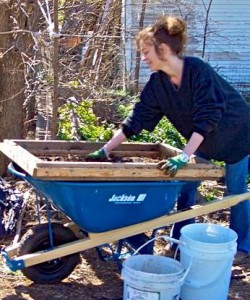
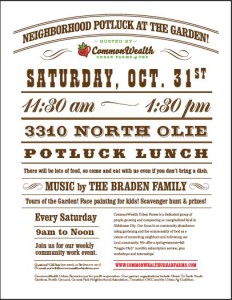
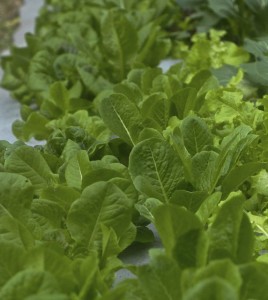
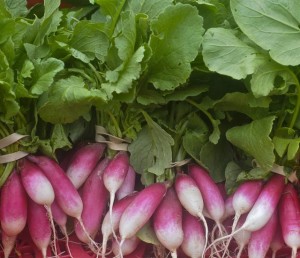
 Doug Tallamy, acclaimed author of two books about native plants, is speaking this Saturday, August 22, 2:30 pm at OSU/OKC on the third floor of the Student Center, 900 N Portland.
Doug Tallamy, acclaimed author of two books about native plants, is speaking this Saturday, August 22, 2:30 pm at OSU/OKC on the third floor of the Student Center, 900 N Portland.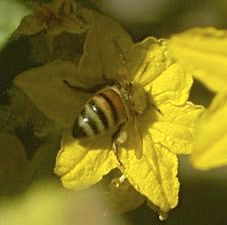 And why are pollinators beneficial to us? We can thank pollinators for one out of every three bites of food we eat. Bees, butterflies, wasps, flies, beetles, bats, small mammals and birds are all pollinators. The bee in the photo here is visiting a cucumber flower to gather pollen; as it moves from flower to flower, bits of pollen get transferred from male to female flowers. Next time you eat a cucumber, thank a bee.
And why are pollinators beneficial to us? We can thank pollinators for one out of every three bites of food we eat. Bees, butterflies, wasps, flies, beetles, bats, small mammals and birds are all pollinators. The bee in the photo here is visiting a cucumber flower to gather pollen; as it moves from flower to flower, bits of pollen get transferred from male to female flowers. Next time you eat a cucumber, thank a bee.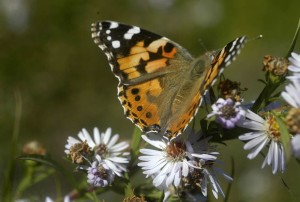
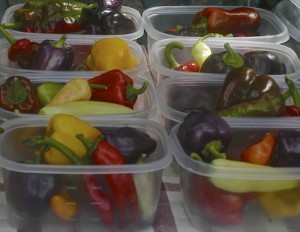 We’re open! Our Farm Stand is open on Saturdays from 9 am to noon; if you’re looking for FRESH and LOCAL, then come on by. We’ll have tomatoes, peppers, cucumbers, fresh basil, onions, potatoes, garlic & elephant garlic for your selection. We’re located at 3310 N. Olie.
We’re open! Our Farm Stand is open on Saturdays from 9 am to noon; if you’re looking for FRESH and LOCAL, then come on by. We’ll have tomatoes, peppers, cucumbers, fresh basil, onions, potatoes, garlic & elephant garlic for your selection. We’re located at 3310 N. Olie.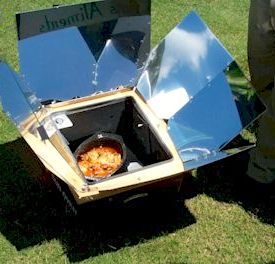

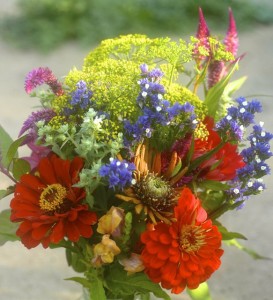
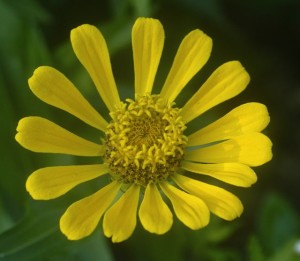
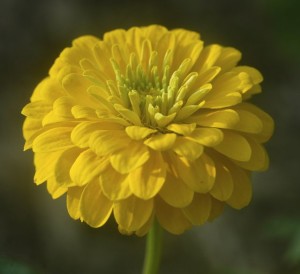
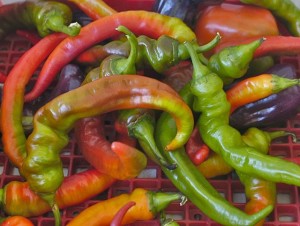
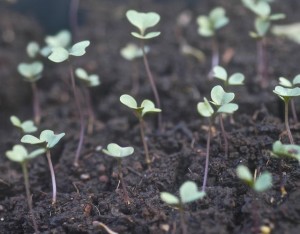
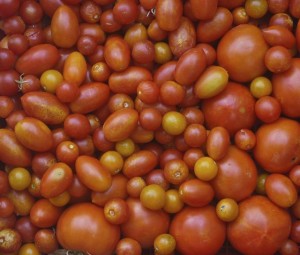
 Our farm stand is open on Saturdays from 9 am to noon; if you’re looking for FRESH and LOCAL, then come on by! Sweet peppers & hot peppers, yard long beans, fresh basil, onions, potatoes, garlic & elephant garlic round out the selection this week. We’re located at 3310 N. Olie in OKC.
Our farm stand is open on Saturdays from 9 am to noon; if you’re looking for FRESH and LOCAL, then come on by! Sweet peppers & hot peppers, yard long beans, fresh basil, onions, potatoes, garlic & elephant garlic round out the selection this week. We’re located at 3310 N. Olie in OKC. Marigolds are a summer workhorse in the flower garden. They bloom from June until frost, cranking out a steady supply of blooms for bouquets or just to enjoy in the landscape. We grow Tagetes erecta, aka African Marigolds, which are actually native to Mexico and Central America. (Go figure.) We have one 30′ x 3′ row of African Marigolds, from which I’ve been harvesting 200 flowers weekly for a couple months now. Impressive! Eventually, the blooms get smaller; a second planting in mid-summer will extend the harvest of large blossoms.
Marigolds are a summer workhorse in the flower garden. They bloom from June until frost, cranking out a steady supply of blooms for bouquets or just to enjoy in the landscape. We grow Tagetes erecta, aka African Marigolds, which are actually native to Mexico and Central America. (Go figure.) We have one 30′ x 3′ row of African Marigolds, from which I’ve been harvesting 200 flowers weekly for a couple months now. Impressive! Eventually, the blooms get smaller; a second planting in mid-summer will extend the harvest of large blossoms. Easy to grow, this is truly a beginner’s flower. Start seed indoors in March and transplant out in April in a sunny location. Tagetes erecta will grow to 3′ in height, with an abundance of large, fluffy, yellow or orange flowers on long stems. Tagetes patula, or French Marigolds, are shorter, with red, orange, yellow or bicolor flowers. They are an excellent choice for bedding plants or in containers. Tagetes tenuifolia are compact little plants with lacy foliage and clusters of small, single flowers. Their citrusy scent make these the choice for edible flowers; just use the petals, as the base can be bitter. They’re also lovely in borders & pots.
Easy to grow, this is truly a beginner’s flower. Start seed indoors in March and transplant out in April in a sunny location. Tagetes erecta will grow to 3′ in height, with an abundance of large, fluffy, yellow or orange flowers on long stems. Tagetes patula, or French Marigolds, are shorter, with red, orange, yellow or bicolor flowers. They are an excellent choice for bedding plants or in containers. Tagetes tenuifolia are compact little plants with lacy foliage and clusters of small, single flowers. Their citrusy scent make these the choice for edible flowers; just use the petals, as the base can be bitter. They’re also lovely in borders & pots.